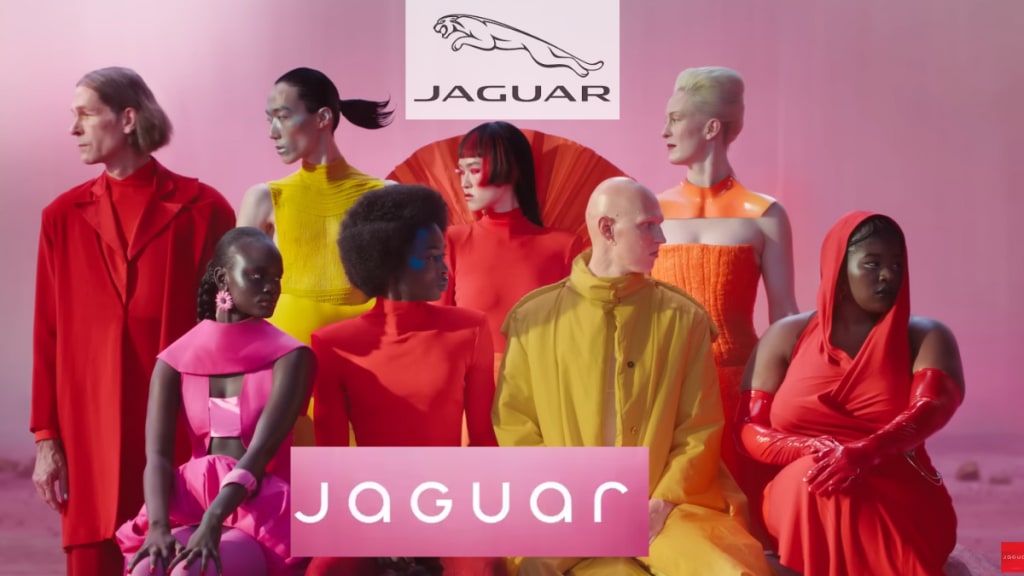When Tesla CEO Elon Musk asked Jaguar “Do you sell cars?” he was only voicing the discomfort many felt with the British luxury car maker’s recent rebranding. Here, experts debate if the revamp was on track or went awry.
Column #1
‘Evolution without clarity is risky’
Krupa Sheth Kapadia
Co-founder & creative director, Strategy
Jaguar has stood for something uniquely timeless — an understated elegance, a touch of British heritage, and a sense of power that didn’t need to announce itself. Its recent rebrand, with bold phrases like “delete ordinary” and visuals straight out of a fashion campaign, has taken a sharp turn away from these roots. The move is unmistakably striking, but is it the right kind of bold?
For decades, people didn’t just buy Jaguars—they bought into a world of sophistication and performance, where luxury felt effortless. This rebrand, however, swaps that quiet confidence for loud minimalism, a direction that feels more in line with a trend than a legacy. Minimalism, when done wrong, doesn’t evoke clarity — it strips away character.
Jaguar isn’t here to pander to nostalgic memories of the Top Gear glory days. It’s not after the approval of those stuck in a past where the word “modern” was an insult. It’s targeting people who buy new cars, people who’ll still be customers in 20 years, and markets that care about more than “manly” badges. It’s trying to evolve and evolution is never neat.
But evolution without clarity is risky. Jaguar’s new tagline, “copy nothing,” feels unnecessary for a brand that’s stood for originality. Loyalists who cherished its balance of tradition and innovation might feel alienated by an identity that feels more runway than roadway.
It’s hard not to draw comparisons to Burberry’s 2018 rebrand. The luxury fashion house replaced its iconic serif logo with a stark sans-serif design, accompanied by a new monogram pattern. The backlash was immediate, with critics accusing Burberry of abandoning its heritage. Interestingly, Burberry recently dialled back its efforts, reintro-ducing elements of its classic branding to restore the emotio-nal connection with its core audience. The lesson? Bold changes in luxury branding work when they’re rooted in a mean-ingful evolution of the brand’s identity.
Are we now marketing to younger buyers? If so, can they afford a Jaguar? Is this a departure from tradition, or is Jaguar reinterpreting it for a modern audience? Without clarity, the risk is alienating loyalists who embraced Jaguar for what it was. After all, when you shift too far, it’s not just an identity you’re changing — it’s the trust you’ve spent decades building.
++++
Column #2
‘Spotlights break from the past’
Ruppal Walia Sharma
Professor of Marketing & head, Delhi Centre, SP Jain Institute of Management & Research
Jaguar dropping its new logo a few days back seems more like the drop of a bombshell, going by the strong reactions it has evoked. If one looks at the launch video, a stark departure from everything one imagined Jaguar to be in the past, one gets the feeling that the intention behind the launch video was exactly that — to shock and make people take notice. It is not so much the logo change as the tone of communication and what it represents that has stirred up strong reactions.
Jaguar MD Rawdon Glover has stated that Jaguar wants to make a new start as it enters an all-electric luxury space. To make a clean break and recreate its identity, the brand has decided to go with a bold makeover. It has served them well as far as catching attention goes; all eyes are on the launch of the new Jaguar, but it is also a risky move.
For a brand that has a rich heritage and which sells more on the basis of self-expressive/hedonistic benefits as opposed to purely functional benefits, any change in image carries a risk of losing its equity and emotional connect with customers due to a dissonance between the consumer’s desired self-image and the brand image.
Makeovers sometimes need to be done if what the brand stands for is no longer relevant due to changes in social context or evolved consumer preferences. The Barbie makeover is an example of a successful move but New Coke is an example of a makeover which failed. The key difference is in the understanding of the target consumer. Is the makeover likely to resonate with the target group? Will it be relevant and meaningful to them and differentiable from the other brands?
If Jaguar is shifting away from its core target group and trying to reach out to a new, younger, bolder customer persona, then a drastic makeover could be a right move. But the brand needs to tread carefully in deciding how far from the core identity they should move. The million dollar question is, how far is too far and is there a substantial segment in the luxury space that will identify with the bold new identity of Jaguar, or will it jettison its rich heritage for nothing?
Jaguar must remember that it is the consumer who owns the brand and if their emotional connection breaks, it is difficult for any brand to recover.

